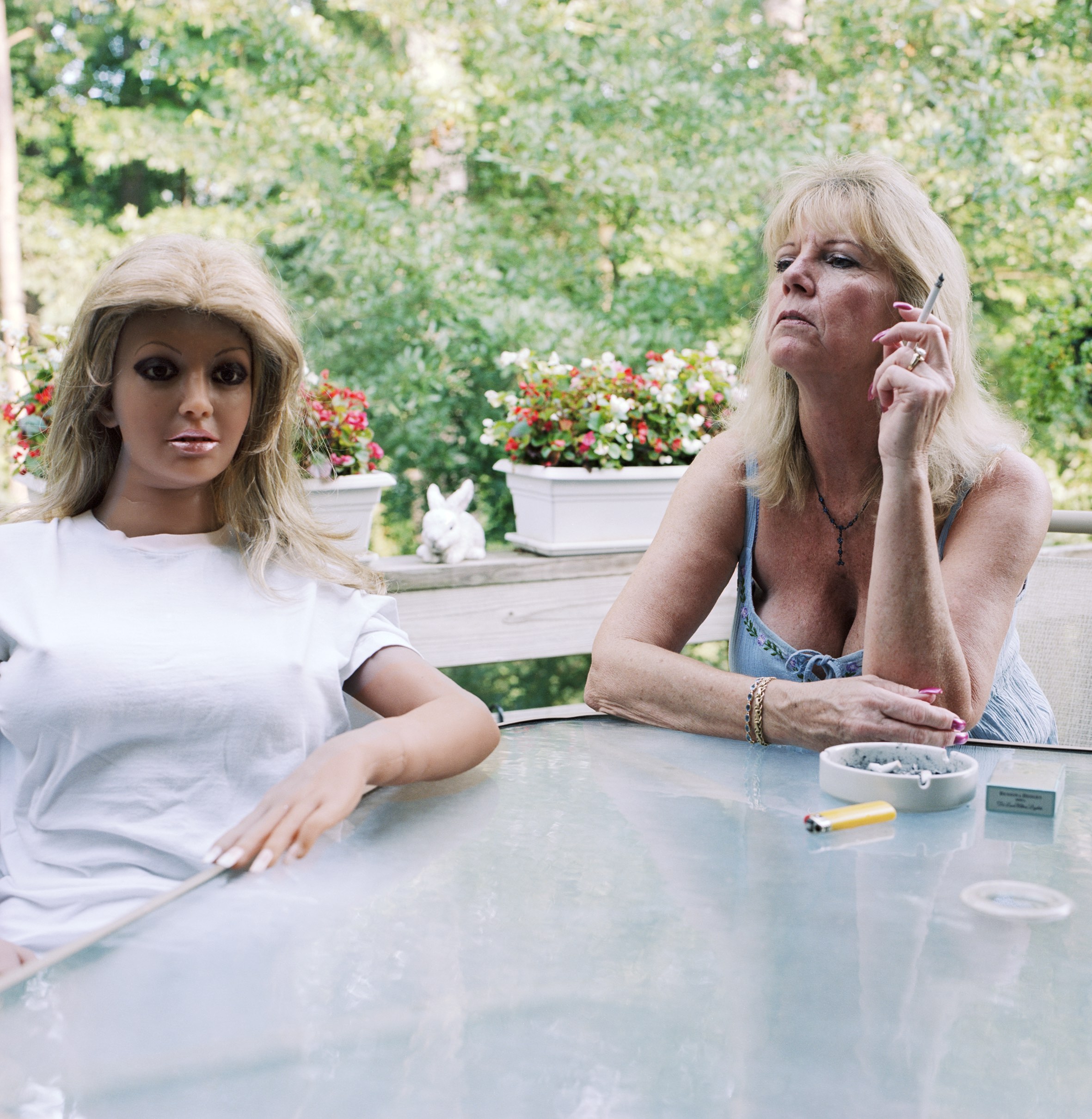Documenting unconventional love in the 21st century
- Text by Miss Rosen

In a culture where overexposure has become the new norm, intimacy and bonding is becoming increasingly complex. People adapt in any number of ways, adopting attitudes, behaviours, and even objects that allow them to channel the desire for love in a tangible way.
In the new exhibition Surrogate. A Love Ideal, opening February 21, American photographers Jamie Diamond and Elena Dorfman explore the expression of familial and romantic love between human and doll — an expression that elicits feelings of surprise, confusion, disgust, and even empathy from those who see it from the outside looking in.
“The dolls are so realistic when you see them, you inevitably have a visceral reaction whether you are repulsed or seduced,” says Diamond. Her series Forever Mothers (2012-2018) and Nine Months of Reborning (2014), portrays the lives of Reborners: a group of self-taught women artists who hand-make, collect, and engage with hyper-realistic baby dolls.
“Even extremely masculine men on the streets, the dolls would melt them,” she continues. “Their level of realism conjures up so much in you, triggering specific emotions relating to parenthood. Reborn dolls are used with Alzheimer patients as a form of therapy. It’s amazing: they release all these endorphins and oxytocin. They are memory triggers – and also comfort.”

Elena Dorfman. CJ 3, 2002. From Still Lovers

Jamie Diamond. 7.11.11, 2012. From I promise to be a good mother
Once immersed, Diamond embraced the Reborner culture, becoming a maker herself. “I was a doll collector all throughout my childhood,” she says. “Ultimately, it’s about nurturing. It’s make-believe, fantasy, and role-play. None of the women I have met are crazy and think the dolls are real.”
Diamond notes that there is a lot of sensitivity and privacy given to the members of the community, which is something Dorfman echoes. In her series Still Lovers (2001-04), Dorfman documented the domestic lives of men and women who share their homes with sex dolls.
“The assumption in the world is that there must be something wrong with the people who own them,” the photographer says. “At that time nobody had seen this kind of life before. The people who owned dolls were terrified to let someone in their homes. There was a deep fear of the neighbours finding out because the response has been very violent and shameful.”

Elena Dorfman. CJ & Taffy 5, 2002. From Still Lovers

Jamie Diamond. Mother Cherry, 2018. From I promise to be a good mother
“I hope that is shifting, as people are becoming more comfortable ways alternative ways of life, living, and loving other kinds of objects. It’s important to look at how the dolls are becoming, AI is literally upon us, and soon these dolls will be waking and talking. It’s not that far away.”
Both Diamond and Dorfman note that there is no prevailing archetype for adults who love dolls. Whatever their reason, they express love to an object that cannot judge them, and is fully receptive to the attention they are shown.
“I think we are uncomfortable with AI and robotics — it’s too real,” adds Diamond, when asked about the future. “We find it dystopian. People aren’t ready for this yet but in time they will be. This is only the beginning. “

Elena Dorfman. Ginger Brook 4, 2001. From the series, Still Lovers

Jamie Diamond. Mother Kyla, 2012. From Forever mothers

Elena Dorfman. Sidore 4, 2001. From the series Still Lovers

Jamie Diamond. 4.12.12, 2012. From I promise to be a good mother

Elena Dorfman. Galatea 4, 2002. From the series Still Lovers

Jamie Diamond. Mother Brenda, 2012. From Forever mothers

Elena Dorfman. Rebecca 1, 2001. From the series, Still Lovers
Surrogate. A Love Ideal is on view at Fondazione Prada in Milan through July 22, 2019.
Follow Miss Rosen on Twitter.
Enjoyed this article? Like Huck on Facebook or follow us on Twitter.
Latest on Huck

The inner-city riding club serving Newcastle’s youth
Stepney Western — Harry Lawson’s new experimental documentary sets up a Western film in the English North East, by focusing on a stables that also functions as a charity for disadvantaged young people.
Written by: Isaac Muk

The British intimacy of ‘the afters’
Not Going Home — In 1998, photographer Mischa Haller travelled to nightclubs just as their doors were shutting and dancers streamed out onto the streets, capturing the country’s partying youth in the early morning haze.
Written by: Ella Glossop

See winners of the World Press Photo Contest 2025
A view from the frontlines — There are 42 winning photographers this year, selected from 59,320 entries.
Written by: Zahra Onsori

Inside Kashmir’s growing youth tattoo movement
Catharsis in ink — Despite being forbidden under Islam, a wave of tattoo shops are springing up in India-administered Kashmir. Saqib Mugloo spoke to those on both ends of the needle.
Written by: Saqib Mugloo

The forgotten women’s football film banned in Brazil
Onda Nova — With cross-dressing footballers, lesbian sex and the dawn of women’s football, the cult movie was first released in 1983, before being censored by the country’s military dictatorship. Now restored and re-released, it’s being shown in London at this year’s BFI Flare film festival.
Written by: Jake Hall

In the dressing room with the 20th century’s greatest musicians
Backstage 1977-2000 — As a photographer for NME, David Corio spent two decades lounging behind the scenes with the world’s biggest music stars. A new photobook revisits his archive of candid portraits.
Written by: Miss Rosen